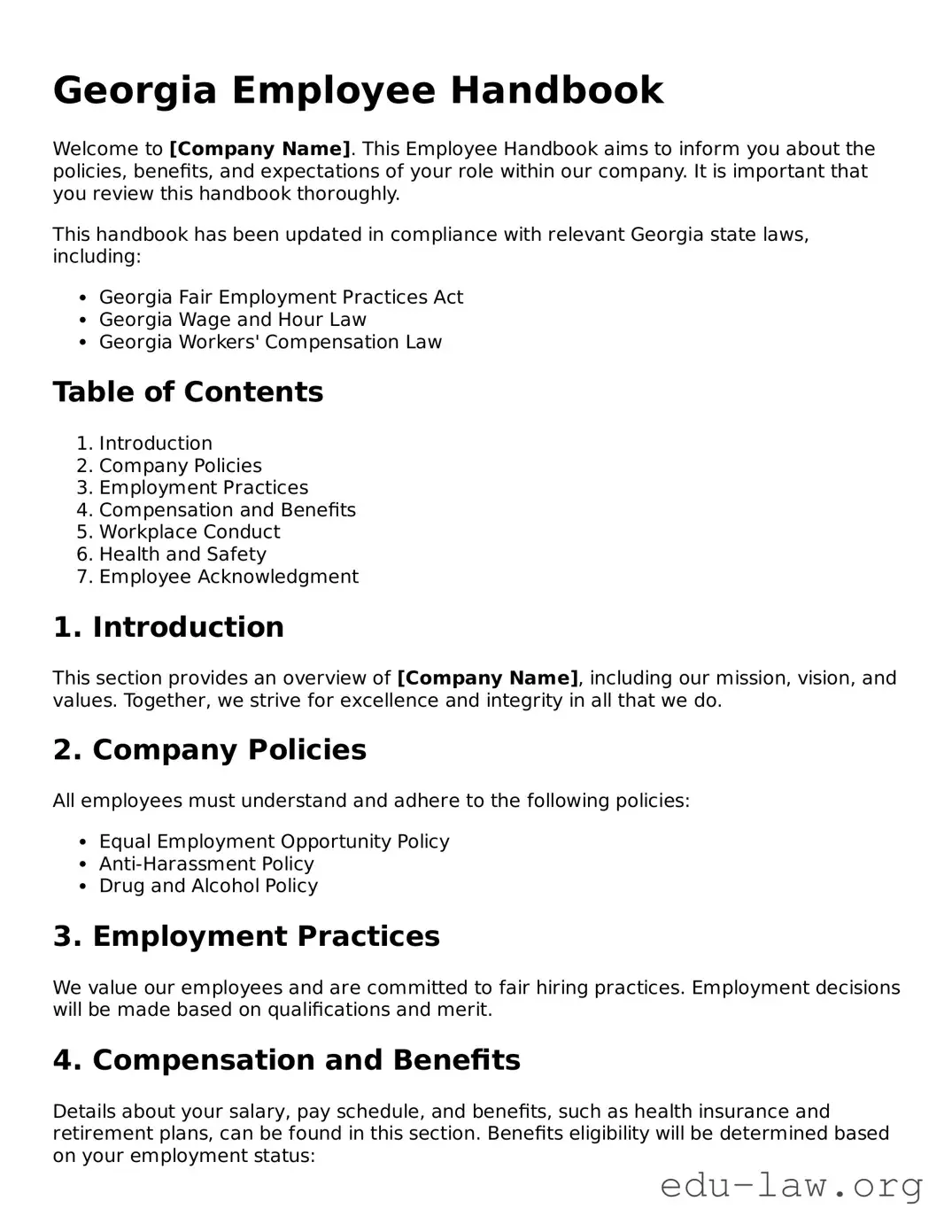Georgia Employee Handbook
Welcome to [Company Name]. This Employee Handbook aims to inform you about the policies, benefits, and expectations of your role within our company. It is important that you review this handbook thoroughly.
This handbook has been updated in compliance with relevant Georgia state laws, including:
- Georgia Fair Employment Practices Act
- Georgia Wage and Hour Law
- Georgia Workers' Compensation Law
Table of Contents
- Introduction
- Company Policies
- Employment Practices
- Compensation and Benefits
- Workplace Conduct
- Health and Safety
- Employee Acknowledgment
1. Introduction
This section provides an overview of [Company Name], including our mission, vision, and values. Together, we strive for excellence and integrity in all that we do.
2. Company Policies
All employees must understand and adhere to the following policies:
- Equal Employment Opportunity Policy
- Anti-Harassment Policy
- Drug and Alcohol Policy
3. Employment Practices
We value our employees and are committed to fair hiring practices. Employment decisions will be made based on qualifications and merit.
4. Compensation and Benefits
Details about your salary, pay schedule, and benefits, such as health insurance and retirement plans, can be found in this section. Benefits eligibility will be determined based on your employment status:
- Full-Time Employees
- Part-Time Employees
- Interns
5. Workplace Conduct
We expect every employee to maintain a professional demeanor. The following behaviors are deemed unacceptable:
- Discrimination or Harassment
- Insider Trading
- Violation of Company Policies
6. Health and Safety
Your health and safety are paramount. All employees should adhere to the guidelines provided by OSHA and report any unsafe conditions immediately.
7. Employee Acknowledgment
All employees are required to sign an acknowledgment form, confirming that they have received, read, and understood the Employee Handbook.
If you have any questions or need further clarification on any policy, please don't hesitate to reach out to [HR Contact Name] at [HR Contact Email] or [HR Contact Phone].
